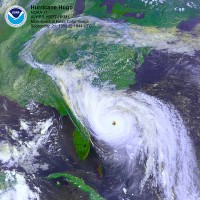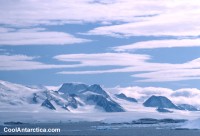
|
Jan 30, 2008
Q&A with Professor Delgado Domingos
By Luis de Sousa, Euro Tribune
Professor Delgado Domingos, one of the leading Portuguese environment scientists, gave a long interview to the Sabado Noticias [Saturday News] magazine, a supplement of the centenary Jornal de Noticias. The last section of the interview touched on Climate issues and has been causing some impact in the local blogosphere. Following is an English translation of this final section of the interview.
Q - It seems consensual that climate changes are already evident, even so that much was talked about in 2007
A - There are measurable climate changes but there is also an enormous manipulation in reducing everything to CO2 and equivalents. The main gas producing the green house effect is water vapour. The present alarm on climate change is an instrument of social control, a pretext for major businesses and political battle. It became an ideology, which is concerning.
Q - Some years ago it was said that it was the oil companies financing scientists to deny climate change
A - Now is more the opposite
Q - Where is the truth? Where is reality?
A - There are three realities: one scientific - that shows the observed data - another of virtual reality - based on computer models - and another public. Between the three there are big contradictions.
Read more here.
Jose Joaquim Delgado Domingos has a degree on Mechanical Engineering, achieved with distinction at the Instituto Superior Tecnico (IST) in 1956. He became a Cathedrated Professor at IST in 1965 and retired in 2006. He has more that 150 published articles in the research fields of Thermodynamics, Numerical Methods in Fluid Mechanics and Energy Transfer, Energy System Analysis, Energy and Environment Policy and Meteorological Forecasts. He founded and directs the group for Numerical Weather Forecasting, that publishes local forecasts daily (in Portuguese)
Jan 30, 2008
Rare Snowstorm Hits the Middle East
By Ian Deitch, Associated Press Writer
A rare snowstorm swept the Middle East on Wednesday, blanketing parts of the Holy Land in white, shutting schools and sending excited children into the streets for snowball fights. Jerusalem’s Old City was coated in white. A few ultra-Orthodox Jews, wearing plastic bags over their hats to keep them dry, prayed at the Western Wall, Judaism’s holiest site. Snow falls in Jerusalem once or twice each winter, but temperatures rarely drop low enough for it to stick. The Israeli weather service said up to 8 inches of snow fell in the city.
Men in long Arab robes pelted each other with snowballs in the Jordanian capital, Amman, and the West Bank city of Ramallah, seat of the Palestinian government, came to a standstill. Heavy snow also was reported in the Golan Heights and the northern Israeli town of Safed, and throughout the West Bank. In Ramallah, residents were surprised to see snow when they awoke. For some, it was their first time. “I am just astonished with the snow. When I saw the snow this morning, I felt happy, my heart was laughing,” said Mary Zabaro, 17.
In Amman, where a foot of snow fell, children used inflatable tubes as sleds. Some roads were temporarily closed. Snow covered most mountain villages and blocked roads in Lebanon. The storm disrupted power supplies in most Lebanese towns and villages, exacerbating existing power cuts. Parts of the Beirut-Damascus highway were closed. Temperatures in Syria dipped below freezing and snow blanketed the hills overlooking the capital, Damascus. Read more here.
Jan 23, 2008
Scientist Says Earth May Soon Face New Ice Age
RIAN News Service
Temperatures on Earth have stabilized in the past decade, and the planet should brace itself for a new Ice Age rather than global warming, a Russian scientist said in an interview with RIA Novosti Tuesday. “Russian and foreign research data confirm that global temperatures in 2007 were practically similar to those in 2006, and, in general, identical to 1998-2006 temperatures, which, basically, means that the Earth passed the peak of global warming in 1998-2005,” said Khabibullo Abdusamatov, head of a space research lab at the Pulkovo observatory in St. Petersburg.
According to the scientist, the concentration of carbon dioxide in the Earth’s atmosphere has risen more than 4% in the past decade, but global warming has practically stopped. It confirms the theory of “solar” impact on changes in the Earth’s climate, because the amount of solar energy reaching the planet has drastically decreased during the same period, the scientist said. Had global temperatures directly responded to concentrations of “greenhouse” gases in the atmosphere, they would have risen by at least 0.1 Celsius in the past ten years, however, it never happened, he said.
“By the mid-21st century the planet will face another Little Ice Age, similar to the Maunder Minimum, because the amount of solar radiation hitting the Earth has been constantly decreasing since the 1990s and will reach its minimum approximately in 2041,” he said. Mankind will face serious economic, social, and demographic consequences of the coming Ice Age because it will directly affect more than 80% of the earth’s population, the scientist concluded. Read more here.

Today’s solar image from NASA showing a spotless sun approaching 12 years after the last solar minimum. The last cycle lasted 9.5 years. Longer cycles usually correlate with cooling. A good site to follow the daily solar activity is here.
Jan 22, 2008
Scientists: Warm Seas May Mean Fewer Hurricanes
By Ken Kaye, Sun Sentinel
Following in the footsteps of an earlier study, government scientists on Tuesday said warmer oceans should translate to fewer Atlantic hurricanes striking the United States. The reason: As sea surface temperatures warm globally, sustained vertical wind shear increases. Wind shear makes it difficult for storms to form and grow. “Using data extending back to the middle 19th century, we found a gentle decrease in the trend of U.S. landfalling hurricanes when the global ocean is warmed up,” Chunzai Wang, a physical oceanographer and climate scientist with NOAA’s Atlantic Oceanographic and Meteorological Laboratory in Miami, said in a prepared statement. Sang-Ki Lee, of the Cooperative Institute for Marine and Atmospheric Studies at the University of Miami, worked with Wang on the study. Their findings are to be published on Wednesday in the journal Geophysical Research Letters. The study found that the warming of the Pacific and Indian oceans plays an important role in determining hurricane activity in the Atlantic.
A study released in December found that as the Atlantic basin becomes hotter, hurricane intensity likely won’t increase and might even deflate somewhat. That study found that ocean’s heat acts to stabilize the upper atmosphere, which, in turn, hurts a storm’s ability to build. It was conducted by Gabriel Vecchi, a NOAA research oceanographer and Brian Soden, an associate professor of oceanography at the University of Miami. Read more here.

Jan 22, 2008
Antarctica Snowfall Increase
World Climate Report
The ice caps hold a special place in the cold hearts of the global warming advocates who are all too quick to insist that our ice caps are currently melting at an unprecedented rate. We suspect that they will not be particularly thrilled to learn that a paper has just appeared in Geophysical Research Letters entitled “A doubling in snow accumulation in the western Antarctic Peninsula since 1850.” The article is by scientists with the British Antarctic Survey and the Desert Research Institute in Reno, Nevada; the work was funded by the UK Natural Environment Research Council and the U.S. National Science Foundation. In case you think that the Desert Research Institute in Nevada would have little interest in Antarctica, recall from geography classes you’ve had that Antarctica receives little precipitation and is regarded by climatologists as a frozen desert.
So while we’ve heard recent reports about Antarctica losing ice, here we again find evidence to the contrary, and then some, at least in these locations. Not only is there no evidence of melting at the Gomez site, snow is accumulating there at an amazingly high rate. Clearly, this paper adds to the evidence that suggests that we simply, as of yet, do not have a firm grasp on the climate changes and their drivers that are effecting Antarctica, past, present, or, much less, future.
Read more here.

The Antarctic Peninsula. Full size image here.
|
|
|
|





